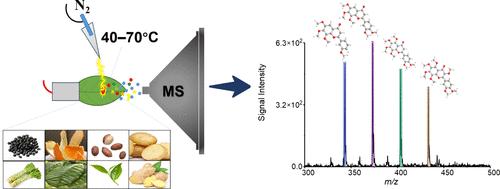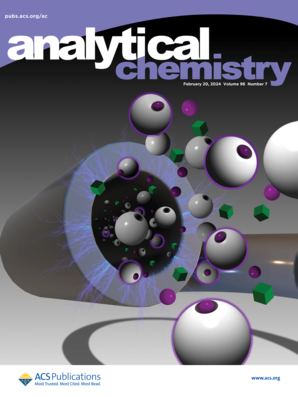In Situ Analysis of Plant Tissue Using Arc iKnife Ionization Mass Spectrometry
IF 6.7
1区 化学
Q1 CHEMISTRY, ANALYTICAL
引用次数: 0
Abstract
This study developed a portable arc iKnife ionization mass spectrometry (AII-MS) technique integrating a surgical knife with low-temperature arc plasma to interact with plant tissues. The thermal energy from the arc plasma induces the sputtering of water-containing plant tissues, leading to the formation of aerosols. These aerosols are then charged by plasma-generated ions, producing charged microdroplets that are ultimately detected by a mass spectrometer. AII-MS effectively mitigates the challenges of aerosol or tissue charring associated with arc ionization. Moreover, appropriate nitrogen cooling minimizes surface damage to plant samples, while the carrier gas facilitates the efficient generation and transfer of aerosols. Comparative analyses conducted before and after tissue cutting with a surgical knife revealed that this technology is well-suited for examining various fresh and dried plant tissues including seeds, fruits, leaves, roots, stems, flowers, and bark. The characteristic components were identified under both positive and negative ion modes. Notably, potassium nitrate was detected in various plant samples for the first time, which may be attributed to its extensive use as a nutrient in vegetable cultivation. In summary, the developed AII-MS can effectively be used for plant tissue analysis, demonstrating high throughput, environmental sustainability, rapid processing, and reliability.

求助全文
约1分钟内获得全文
求助全文
来源期刊

Analytical Chemistry
化学-分析化学
CiteScore
12.10
自引率
12.20%
发文量
1949
审稿时长
1.4 months
期刊介绍:
Analytical Chemistry, a peer-reviewed research journal, focuses on disseminating new and original knowledge across all branches of analytical chemistry. Fundamental articles may explore general principles of chemical measurement science and need not directly address existing or potential analytical methodology. They can be entirely theoretical or report experimental results. Contributions may cover various phases of analytical operations, including sampling, bioanalysis, electrochemistry, mass spectrometry, microscale and nanoscale systems, environmental analysis, separations, spectroscopy, chemical reactions and selectivity, instrumentation, imaging, surface analysis, and data processing. Papers discussing known analytical methods should present a significant, original application of the method, a notable improvement, or results on an important analyte.
 求助内容:
求助内容: 应助结果提醒方式:
应助结果提醒方式:


